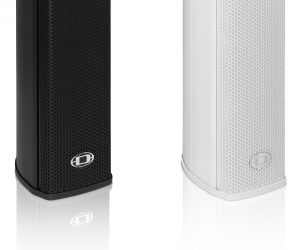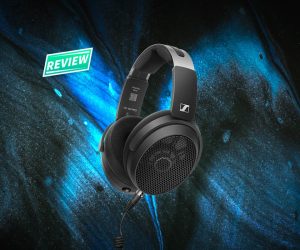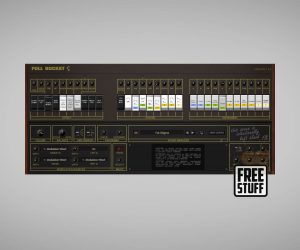
No Pressure: Pascal Gabriel’s Laid-Back Approach
Emma Louise was close to musical burnout, but a French stint with a unique producer birthed her latest album Supercry.
By Preshan John
22 November 2016
Producer Pascal Gabriel’s style is literally miles away from the typical commercial recording approach. His home studio (if you can reduce it to that) is in an antiquated castle with fortified walls located somewhere in southern France. To maintain radio silence and lack of distraction when recording, the nameless studio’s coordinates will only be disclosed if you’ve booked in with him. Bass traps are replaced with sofas, instead of treated walls you’ll find windows looking out over picturesque French views, and the main studio throne looks like a horse saddle stuck on a pipe. Pascal’s wife’s catering is part of the experience with all meals provided, and accommodation too.
As it turns out, this extremely laid back recording treatment was precisely what Aussie artist Emma Louise needed. After a rough year following a break-up, negative experiences recording her previous album, and songwriting springs running dry, it was the Pascal prescription that revived her musical senses. The result? Supercry. We’ll let Pascal take it from here.
GUIDING VOCALS
When recording any artist, I always call the tracks ‘vocals guide’ or something, so it’s not like ‘oh, I have to do my proper vocals now’ and they get really nervous. Most of Emma’s final lead vocals in Supercry have a good 20-30% of the original first take in them. Usually when the singer is carefree and not thinking too much about their delivery, you get some really good parts.
I used a 1960s Neumann U57 microphone with a really nice capsule in it. That goes through a UAD LA-610 then straight into the Apogee AD. I’ve got the sE Reflexion Filter, and that’s it — I never do the vocals in the live room, ever. It’s much better for the singers, they feel much more at ease. We can sit and chat about the song, which direction it’s going to go, and the mic is right there — it’s not like, ‘bye, you’re going to a different room.’
When mixing I’d usually put it back through the LA-610, sometimes I’ll send a couple of tracks back through the room, and that’s it. Other times I’ll track it through a different mic. I’ve got a vintage Sennheiser 421 which is nice and completely different — it’s not valve, it’s purely electronic, and it kind of softens the edges a bit.
The UAD plug-ins get a lot of use — I like the Urei simulation, the grey-face LA-2A, the Neve compressor and EQs. I actually had a hardware Neve and I never use it now because I found the UAD one was so close and so good, and instantly recordable, that it wasn’t worth working with the real thing. I think they’re very good plugs.

MIX AROUND THE VOCALS
Supercry is not a pop record per se, where you have big banging things coming in the chorus. On the album, it was really a question of finding the space for Emma’s vocals first. For me, vocals come first. I always construct the mix around the vocals. Make them sound brilliant, then work on the backing track from the ground up, constructing the mix around the vocals. It’s all about the silence, like in any mix. It’s all about the gaps, it’s about where you want the dynamics to happen and where you don’t.
Then in the mix stage it’s a question of finding the 3D image in your head and what you want to present. There’s no formula, it’s down to your taste. You can mix the same elements into two completely different mixes. It’s all decisions. That’s how it works.
WINNING THE VIBE BATTLE
Pascal Gabriel: Artists like to be relaxed. When you get them in a relaxed situation, that’s really half the battle won because they’re not worried or feeling stressed. Anything about recording, or a studio with big red lights, I’m not going to have. I guess I’m quite good at making artists feel at ease — well, that’s what they tell me afterwards.
My studio is in a very old building in the south of France. The external wall is a rampart, like a fortress if you like. So the external walls are four feet deep because they were made to sustain cannon attacks and so on.
The tracking and control rooms are in the top floor. I call it a glorified bedroom studio because that’s what it looks like. It’s got great gear in it but it’s all set up in a very idiosyncratic fashion. It’s not very posh-looking. It’s very homely, like a living room. You can just chill out, have the lights low, and you get great views out the windows. I tried to make it looking as least like a studio as possible.
THINKING IN THE BOX
I work pretty much all in the box. I send some things out to external units but most of the time mixing-wise it stays in the box. I have a few send and return things like UAD LA-610, a couple of 1960s Drawmers and other bits and pieces, but generally it stays in the box.
Logic is my DAW and I use some of its plug-ins as well; if you use them kindly it’s fine. I use the compression quite a bit and the instruments sometimes as well because they’re different and just a bit more obvious.

REAL VS SAMPLED PIANO
The piano we used on Grace and I Thought I Was A Ship was recorded in the basement of a museum in Brisbane. But on most of the other tracks it’s my own Schimmel upright piano which I’ve got in the studio. Schimmel is a German brand with a very particular, velvety, muted sound. The soft pedal gives it this lovely felt piano sound. Emma loved it as well.
We also used a plug-in by Spitfire Audio which has two different felt piano instruments and they’re really great. It’s basically a multi-sampled Schimmel so it’s very interchangeable and very hard to tell them apart.
It really depends on the part as to whether we record my Schimmel or use the sampled version from Spitfire Audio. Emma’s a great piano player, so we just do a couple of takes on the piano and think ‘yeah that’s pretty good, now let’s do a couple of takes on the sampled piano’, then we decide which one we like best.
GET THE AIR IN THERE
I’ve got several little amps in the live room; some big, some small. Often I’ll send stuff to the room using a mini Mackie desk for in and out, and I physically bring something out of the Apogee audio box and just send it to an amp. I do things like that mainly on vocals, sometimes on instruments that felt a bit sticky, and no amount of in-the-box delay or reverb is making it work. By re-miking them I effectively get a bit more realness in it.
Once you spew things out of the box and bring it back, it makes a big difference. Suddenly you have the air, the speaker performing, the mic performing, and the air in between performing. It creates a very different image of the sound which can sometimes really make it blend better in the mix.
There’s a couple of distant mics always set up in the room, and then depending on the sound, if I wanted a lo-fi mic, I’d use one of the cheap Eastern European mics I bought years ago and try them up close. If I wanted something nicer I might use a vintage Neumann, depending on what we were looking for. But the air is important, and mic position is very important.
STRETCH IT OUT
Quite a lot of the sounds were created with Emma. On Underflow, for instance, the big pad sound that comes in the chorus is basically a piece of sound that we isolated from her field recordings she made in Tokyo. We time-stretched it with a piece of software called Paulstretch which basically stretches things a million times, so it creates this really, really long sound from a tiny little snippet. We turned that into a pad.
We found Paulstretch became a bit of a key element in terms of sonics for the album. We sampled the church bell of the village. We used some of Emma’s samples in Japan and from her travels, and new samples we created ourselves out of instruments I had lying around. It was good fun. It gives it character. I rarely use presets.
VACATION RECORDING
Artists I’m working with stay in a house with us. My wife caters for them — she’s an excellent chef.
It’s great bat in the morning, no interviews. All they have to think about is their record, and that makes a massive difference.
They wake up and go for a run or whatever, we start at 11am, work until about 1:30pm, have lunch, work from 3pm until 8-9pm, then have dinner. After dinner we’ll go back upstairs, do an appraisal of the day’s work, then start again the next day. I’ve kind of honed it down to this set up over the last 10 years. It’s lovely, and it seems to work really well.
















RESPONSES